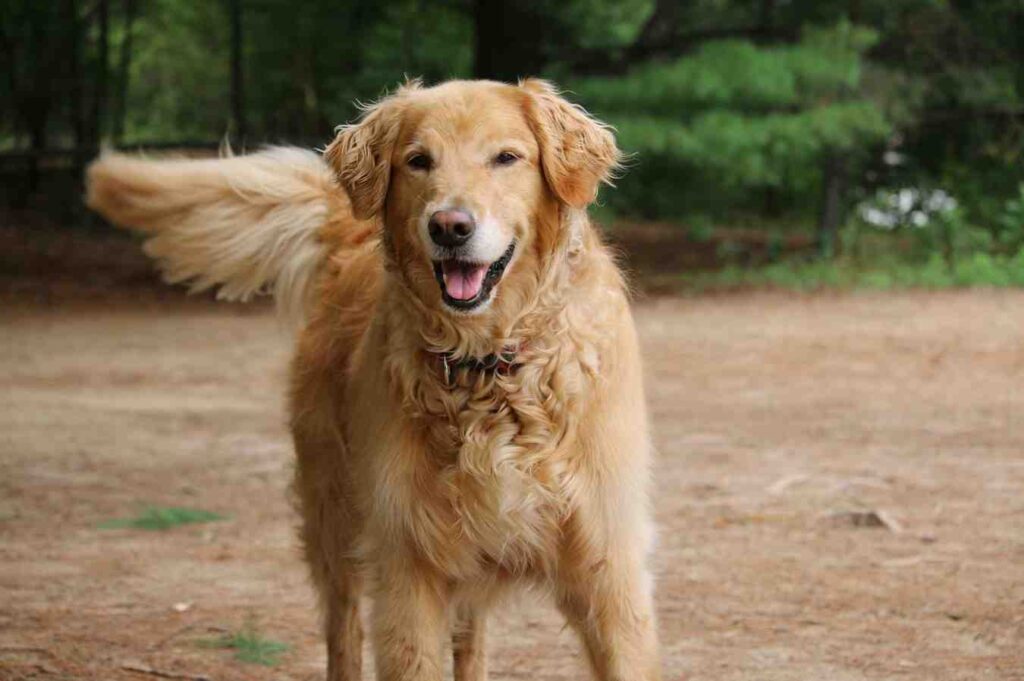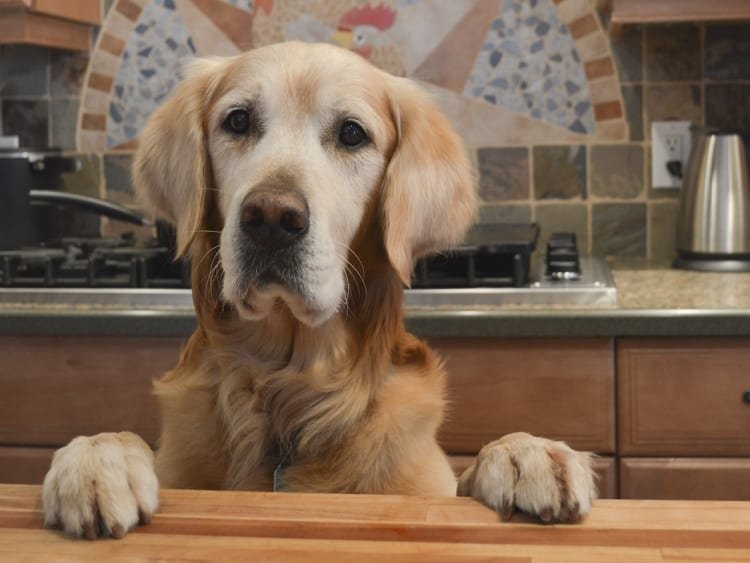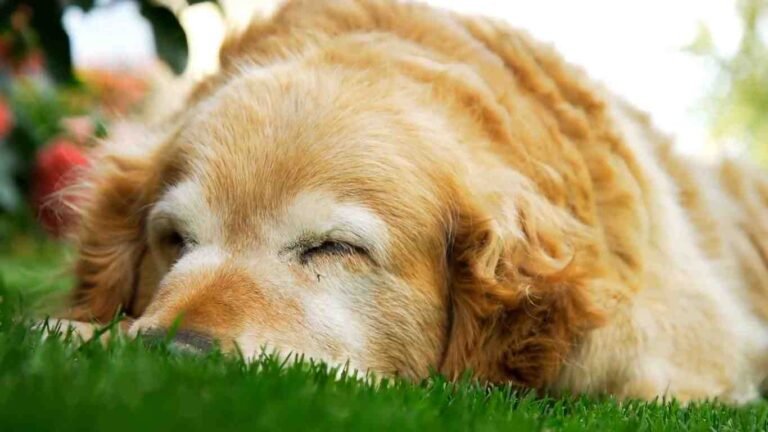Golden Retrievers are loved for their friendly personalities and stunning fur coats. Their fur isn’t just about beauty, it’s also an important part of their health and well-being. In this guide, I’ll break down the different Golden Retriever fur types, what makes each one special, and how you can care for your furry friend’s coat to keep it healthy and beautiful.

If you’re short on time, here’s a quick overview: Golden Retrievers have a double coat consisting of a soft undercoat and a water-resistant outer coat. Their fur can be straight, wavy, or slightly fluffy, and their grooming needs depend on the coat type. Let’s dive deeper into this fascinating topic and discover all the details!
What Makes a Golden Retriever’s Fur Unique?
Golden Retrievers have double coats, meaning their fur is made up of two layers:
- Undercoat: This is soft, dense, and keeps them warm during cold weather.
- Outer Coat: This is water-resistant and protects them from dirt and debris.
The double coat also helps regulate body temperature, which is why Golden Retrievers can handle both summer and winter so well. However, the same double coat makes them notorious shedders. Trust me, if you have a Golden, you’ll find fur on your clothes, couch, and even in your morning coffee sometimes!
Types of Golden Retriever Fur
Golden Retrievers generally have three fur types. Each type looks slightly different and may require a unique grooming routine.
Straight Fur
This is the most common type. It’s sleek, smooth, and lies close to the body. Dogs with straight fur are often easier to groom because their coat doesn’t tangle as much. My own Golden, Bailey, has a straight coat, and I love how shiny it looks after a good brushing session.
Wavy Fur
Wavy fur adds a bit of personality to a Golden Retriever’s appearance. It’s soft with gentle waves, especially around the ears, chest, and tail. While it’s beautiful, wavy fur is prone to tangling, so regular brushing is a must. Once, I skipped brushing Bailey for a week, and those tangles were a nightmare to remove. Lesson learned!
Fluffy Fur
Some Golden Retrievers have fluffier fur, which makes them look extra cuddly. This type is often thicker and more prone to matting. If your Golden has fluffy fur, grooming tools like a de-shedding brush and detangler spray will be your best friends.
Also Read: English Cream Golden Retriever
Fur Colors in Golden Retrievers
Golden Retriever fur isn’t just about texture; the color also varies. Here’s a look at the most common shades:
| Fur Color | Description |
|---|---|
| Light Golden | Almost cream-colored, giving an elegant and soft look. |
| Classic Golden | The golden color most people associate with the breed. |
| Dark Golden | Rich reddish or mahogany tones, often seen in field-line Retrievers. |
The color of your Golden Retriever’s fur doesn’t impact its texture, but darker coats might show shedding more on light furniture.
Why Does Fur Texture Vary?
The texture of a Golden Retriever’s fur is influenced by several factors, including genetics, health, and environment. For example, English Cream Golden Retrievers often have straighter coats, while American Goldens might lean toward wavy or fluffy fur.
Changes in fur can also signal health problems. If your Golden’s coat becomes dull or brittle, it might be due to poor nutrition or underlying skin issues. A study published in Veterinary Dermatology highlights how omega-3 fatty acids in a dog’s diet improve coat health. Foods rich in fish oil or supplements can make a noticeable difference in your Golden’s fur.
Grooming Tips for Golden Retriever Fur
Keeping your Golden Retriever’s fur healthy isn’t just about looks, it’s also about their overall well-being. Grooming helps remove dirt, prevent matting, and reduce shedding.
| Grooming Task | Frequency | Tips |
|---|---|---|
| Brushing | 2–3 times per week | Use a slicker brush for the outer coat and a comb for the undercoat. |
| Bathing | Once a month or as needed | Use a gentle, dog-friendly shampoo to avoid drying out their skin. |
| Nail Trimming | Every 4–6 weeks | Keep their nails short to prevent them from snagging on carpets. |
| Fur Trimming | Every 8–12 weeks | Focus on areas like the tail, paws, and ears to maintain a tidy look. |
Regular brushing helps manage shedding, and trust me, it’ll save your vacuum cleaner from overwork!
Seasonal Shedding and Coat Care
Golden Retrievers shed year-round but go through heavy shedding periods in spring and fall. This is when they blow their coat to adjust to seasonal changes. During these times, you’ll need to brush them daily to keep the fur from taking over your house.
One trick I’ve found helpful is using a grooming glove. It not only removes loose fur but also gives your Golden a soothing massage. Bailey loves it, and it’s become part of our bonding time!
Related Post: Tips to Reduce Golden Retrievers Shed
Common Fur Problems and How to Solve Them
| Problem | Solution |
|---|---|
| Matting | Regular brushing and using a detangler spray. |
| Dry Skin and Dull Fur | Add omega-3 fatty acids to their diet through fish oil or supplements. |
| Excessive Shedding | Brush daily and ensure a balanced diet with high-quality proteins. |
If shedding or coat issues persist, it’s always a good idea to check with your vet.
Fun Facts About Golden Retriever Fur
Did you know that Golden Retrievers were bred to have water-resistant coats? This is because they were originally hunting dogs, retrieving waterfowl. Their fur helps them stay warm and dry even in chilly lakes.
Another interesting fact: A Golden Retriever’s fur often has a subtle wave on their back, which is sometimes called a feathering wave. It’s one of the little quirks that make this breed so lovable.
In Short
Golden Retriever fur Golden Retriever fur is as versatile as the breed itself. Whether your pup has straight, wavy, or fluffy fur, their coat deserves regular care and attention. By understanding the unique needs of their fur type, you can keep your Golden looking and feeling their best.
Remember, grooming isn’t just a chore, it’s a chance to bond with your dog. Whether you’re brushing out tangles, giving them a bath, or just enjoying a cuddle session, every moment counts. After all, isn’t the fur-covered couch worth it for all the love they bring into your life?
FAQs
1. What type of fur does a Golden Retriever have?
Golden Retrievers have a double coat with a soft undercoat and a water-resistant outer coat.
2. What are the different coats of Golden Retrievers?
Golden Retrievers can have straight, wavy, or fluffy fur, each with unique grooming needs.
3. Why are some Golden Retrievers fluffier than others?
Fluffiness is influenced by genetics and sometimes the environment. Fluffier coats are more common in certain bloodlines.
4. Which type of Golden Retriever is best?
All Golden Retrievers are wonderful, but the best type depends on your preferences for coat texture, grooming, and lifestyle.
5. What is the rarest type of Golden Retriever?
The English Cream Golden Retriever, known for its light-colored coat, is considered one of the rarest types.
6. Which color is best in Golden Retrievers?
This is subjective! Light Golden, Classic Golden, and Dark Golden are all beautiful in their own ways.
7. Do Golden Retrievers shed a lot?
Yes, Golden Retrievers shed year-round, with heavy shedding in spring and fall. Regular brushing helps manage it.
8. How often should I groom my Golden Retriever?
Brushing 2–3 times a week is recommended, but daily brushing is ideal during shedding seasons.
9. Can a Golden Retriever’s fur color change over time?
Yes, puppies often start lighter and develop a richer golden shade as they grow.
10. How do I keep my Golden Retriever’s coat healthy?
Feed them a balanced diet with omega-3 fatty acids, groom regularly, and use gentle, dog-friendly shampoo.




[…] You may interested: Golden Retriever Fur Types […]
[…] Also Read: Golden Retriever Fur Types […]
[…] Also Read: Golden Retriever Fur Types […]
[…] Coat colors: Golden, cream, or even a mix. […]
[…] Coat: It should be shiny, dense, and golden, neither too light nor too dark. […]
[…] Retrievers have unique coats with two […]